Getting clients to train their glutes is pretty easy—after all, everyone wants their butt to look good. But as trainers and instructors, we have an underlying agenda. We know that teaching clients to “recruit the glute” will not only help them produce more power, but will also improve how they move. In fact, strong glutes produce mobile hips, a stable core, and a decreased risk of knee and back pain.
To train the three main muscles of the glutes—the glute minimus, medius and maximus—you must have your clients or class participants do more than squats and lunges. The gluteus maximus’ primary role is to extend and externally rotate the hip—it is the main muscle that pushes your leg back when you walk. That is, if you walk correctly. With digital devices now stuck to our hands, walking has turned more into a shuffle. The glutes and hip are barely working and holding onto a phone halts the natural swing of the arms. When discussing the importance of training the glutes, I ask my clients to be mindful of walking “hands free.” Walking with purpose and intention will not only draw them into a more upright position, it will get them where they want to go faster!
The gluteus minimus and medius assist in abducting the leg away from the midline of the body. These smaller muscles are prime movers during walking, particularly during the “stance” phase, or when the feet are in contact with the ground. They work to keep both hips at the same level.
Add these six exercises into your classes and programs and your participants are sure to experience significant increases in strength and mobility.
1. Side Plank With Clam Shell (gluteus minimus and medius)
Lie on your side with your elbow under your shoulder and your hips stacked. Keep the bottom knee on the floor and push up into a modified side plank. At the same time, externally rotate your top hip. Slowly drop the top knee down to the bottom knee to close the clamshell as you tap your bottom hip to the floor. Repeat 12-15 reps, then flip over to the other side and repeat.
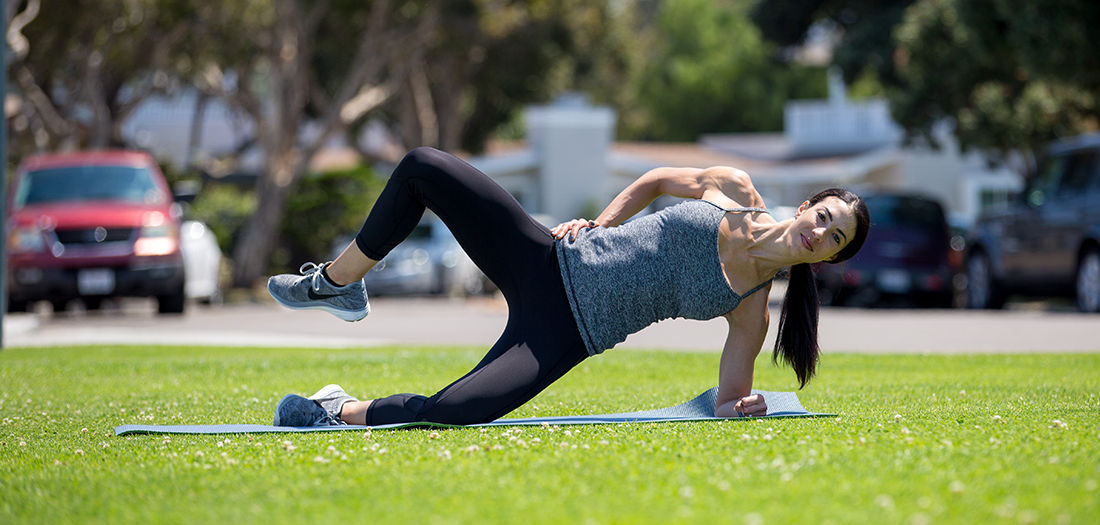
2. Prone Frogger (gluteus maximus)
Lie prone and bend your knees to 90 degrees. Externally rotate your hips, so that your knees separate (about 12 inches apart) and your heels touch. Keep your head down and engage your glutes as you push your feet up toward the sky. Your quadriceps should lift off the floor. Pause at the top before slowly lowering back down to the starting position. Perform 12-15 repetitions.

3. Side Balance Leg Circles (gluteus minimus and medius)
Place your hand on the floor, directly under your shoulder. Place your bottom knee under your hip. Lift your top leg and line your foot up with your top hip. While moving from the hip, draw 10 small circles in one direction, and then reverse the circle for another 10 repetitions. Switch sides and complete another set with the other leg.
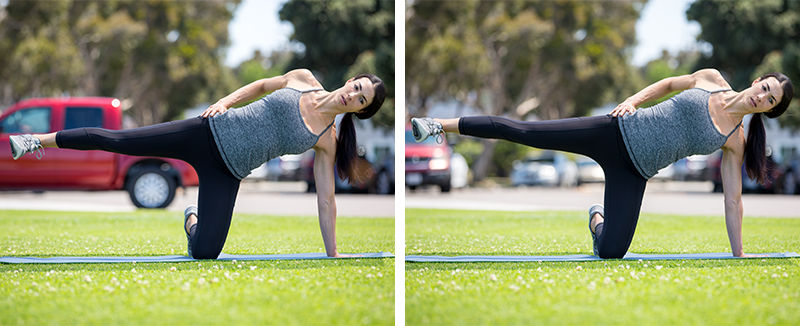
4. Glute Bridge With Band (gluteus maximus)
Place a mini band around your calves. Lie on your back and lift your hips into a bridge position. While keeping tension on the band, tap your hips down to the floor and then lift back up. Keep a straight spine and move primarily from the hips. Perform 15-20 repetitions.
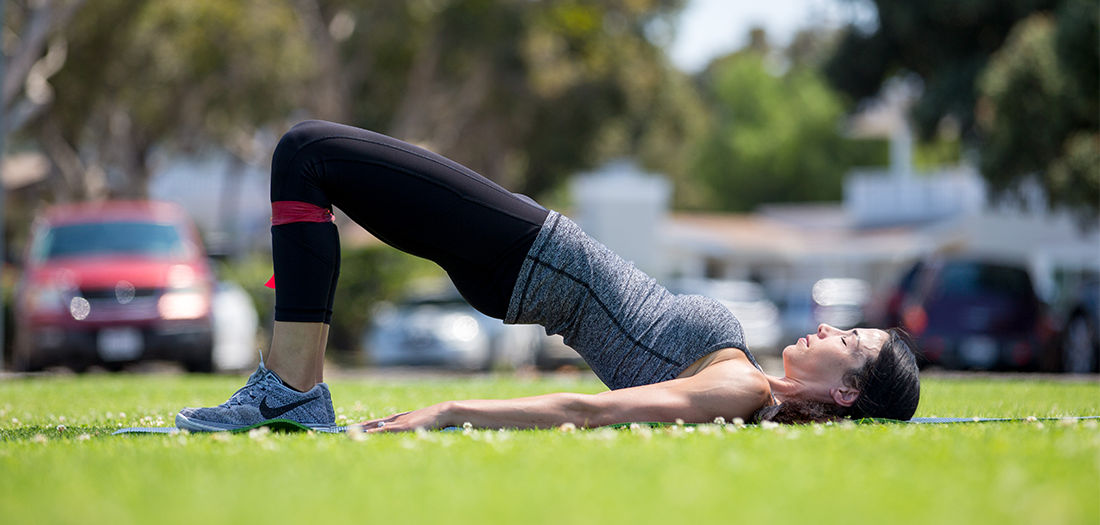
5. Seated Mini-band Hip Abduction (gluteus minimus and medius)
Place the band around your calves and sit down with your knees bent and feet on the floor. Position your hands on the floor slightly behind you. Keep a straight back and press your legs out to the sides, externally rotating the hips. Maintain control as the legs come back together. Repeat 12-15 repetitions.
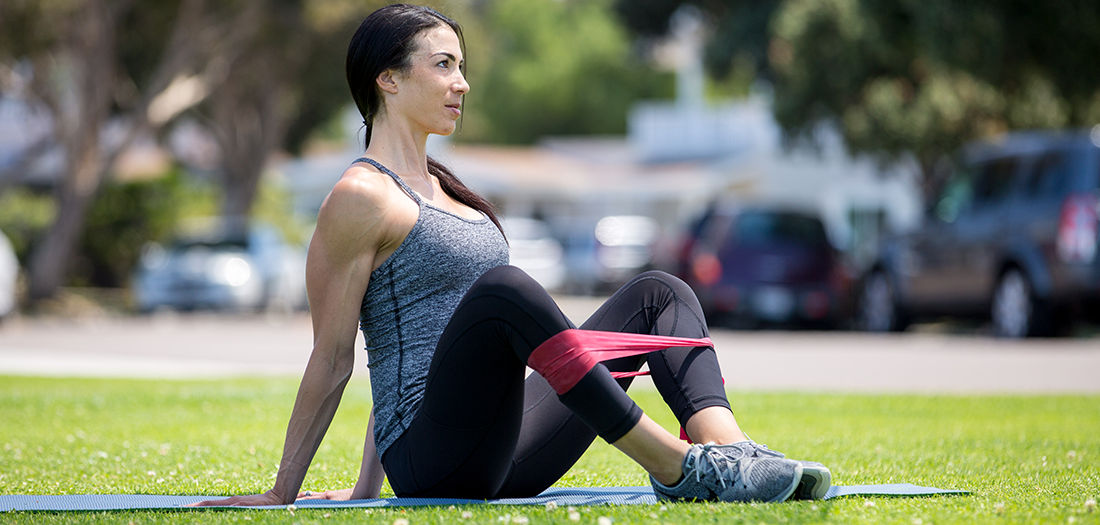
6. Elevated Plank With Leg Lift (gluteus maximus)
Place the band around the calves. Rest your hands on a bench/step, directly under your shoulders. While maintaining a plank position, squeeze your glutes as you alternately lift each leg. Complete 12-15 repetitions with each leg.
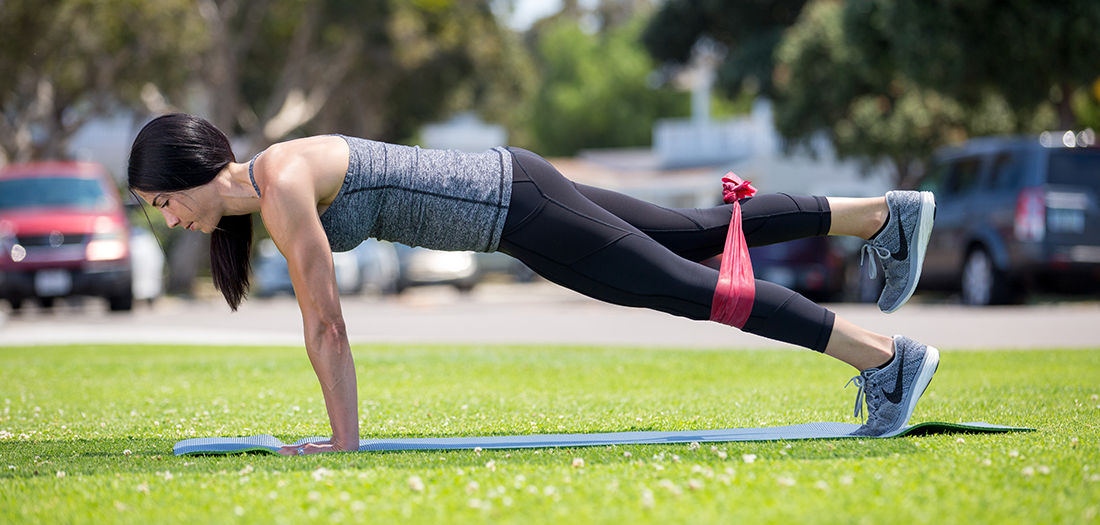
Deliver the individualized programs people need to adopt long-term, healthy behaviors with ACE’s Personal Trainer Certification.




 by
by 










 by
by